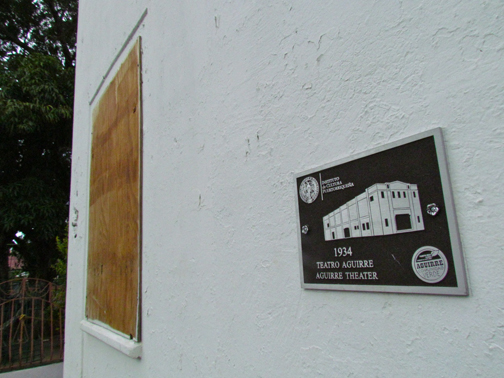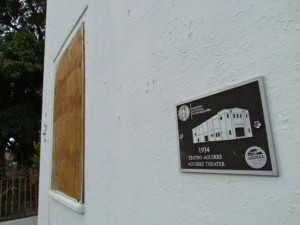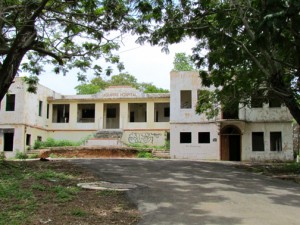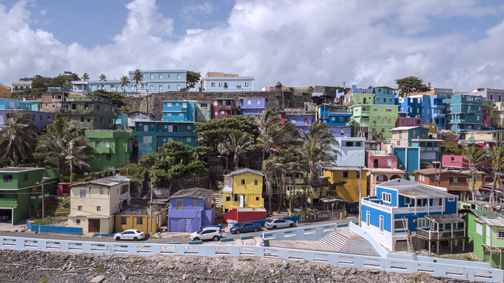Op-Ed: ‘Nothing happens in Aguirre’

Those were the words used by the youngsters of Barrio Aguirre in the municipality of Salinas to describe their community. Words that hit me and even shook me, (and still do as I remember them). But those are also words that show the reality of a neighborhood full of history, yet today marked by high contrasts.
Pondering on them, I can’t help but realize that words are contradictory and somehow painful, considering that decades ago Aguirre was the only self-sustaining community on the island during the 20th century; described by many as “a small country within a larger country.”
It was a development model and focus of sugar cane production on the island, a neighborhood with quite a history. Whether as a top electric power generator, or as a defunct sugar empire, or natural salt factory, Aguirre always exercised a dominant role in the regional and national economy.
But today the story is another… Walking through its streets, it is impossible not to notice the neglect and deterioration of the neighborhood’s physical spaces and buildings that carry stories and legacy within their walls, but that now belong to government instrumentalists, while displaying big signs with the names of the current owners… keeping those properties closed and out of locals’ reach, thus dividing the heritage that belongs only to members of their community and determining “development plans” that do not seem to integrate their visions and not even their voices.
Walking through Aguirre makes one feel like the buildings are crying out in despair begging to be, at least, heard.
At the same time, the voices of the youth living in Aguirre tell an additional story, one that not many people nowadays would like to hear. They tell of how tired they feel about living as hostages watching television, yet haunted by the idleness, apathy, neglect and social illness that take over their streets.
They worry about the example that the adults provide the kids in the neighborhood and wish they could help build a better future. They feel disturbed by the few chances and the feelings of conformity perpetuated within their community.
Aware of these social problems, the youngsters aim to rescue their spaces, claiming opportunities for recreation and development. Raising this voice in the midst of a workshop that I had the honor to facilitate while defining what they crave for their community, they expressed longings that range from a sports and arts academy to tracks, trails, and increased police presence.
When dreams and development ‘collide’
When analyzing these dreams and desires I immediately realized how they collide with “those development plans” for Aguirre currently proposed by the government.
Thus, between the dichotomy and contradictions between the people of the community and government plans, I wonder, why is there such selective myopia and blindness? Why the desire to discuss instead of allowing the community do the talking? Why this agenda to take over instead of empowering the people? Why the strategy to provide a “delivery” of solutions that do not meet the challenges faced by the community?
And I wonder when we will all learn to let go of the ‘keynote addresses’ and the ‘absolute knowledge’? When will we impose the busy schedules of individual interests? When will we begin to simply connect with people, ideas, feelings and experiences? That is, that we really strive to create a genuine interest, and to really understand their problems, needs and feelings.
When will we begin to appreciate the magic of “building bridges” to understand how each person constructs their reality and, from there, let understanding open the doors for dialogue to build on possibilities, actions and sustainable community development plans?
It is time to understand that the process of transformation does not happen only because of anyone’s will or because of the work of an expert; it is about a transformation that comes from connections, aspirations and dreams, which were evident to me in each of the smiles and hugs from each of the children, as well as in the words, ideas and reflections of the youth living in Aguirre.
My conversations with the youngsters were a mutual exchange process through which we generated a shared space that served as an invitation for dreaming, to be seduced by these dreams that we put into words and give ourselves permission to see ourselves as actors and catalysts for development and opportunities for the community — allowing us to believe that the idea of a new and prosperous Aguirre, beyond a dream, is a possibility.
Recalling our conversations, I acknowledge that these young leaders are full of spark, yet are irreverent, daring, and full of energy and social commitment. They are youngsters thirsty to take over their streets, their neighborhood and its history to give a new and vibrant voice to their community.
A voice to honor the legacy and contribution that in its time Aguirre made to our island and to show the potential of the community today to forge its future by building a present based on opportunities and dignity.
Today, Aguirre and its youngsters continue to wait for destiny to validate and optimize their attributes.
Author Astrid A. Jiménez-Morales, is an organizational development consultant and community development facilitator.













